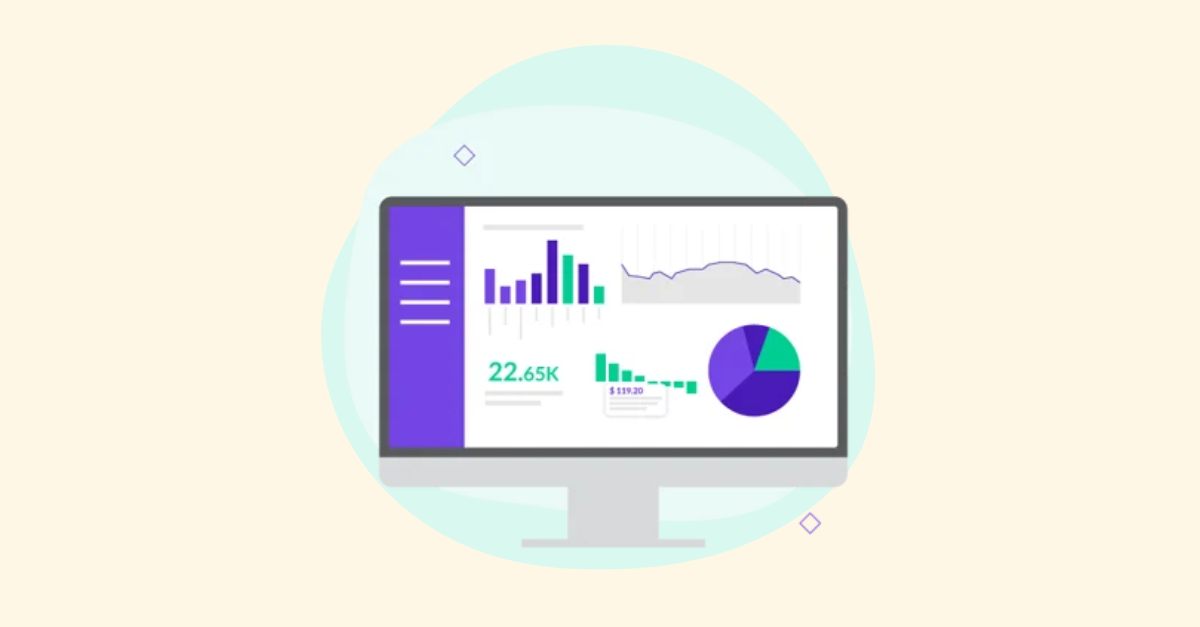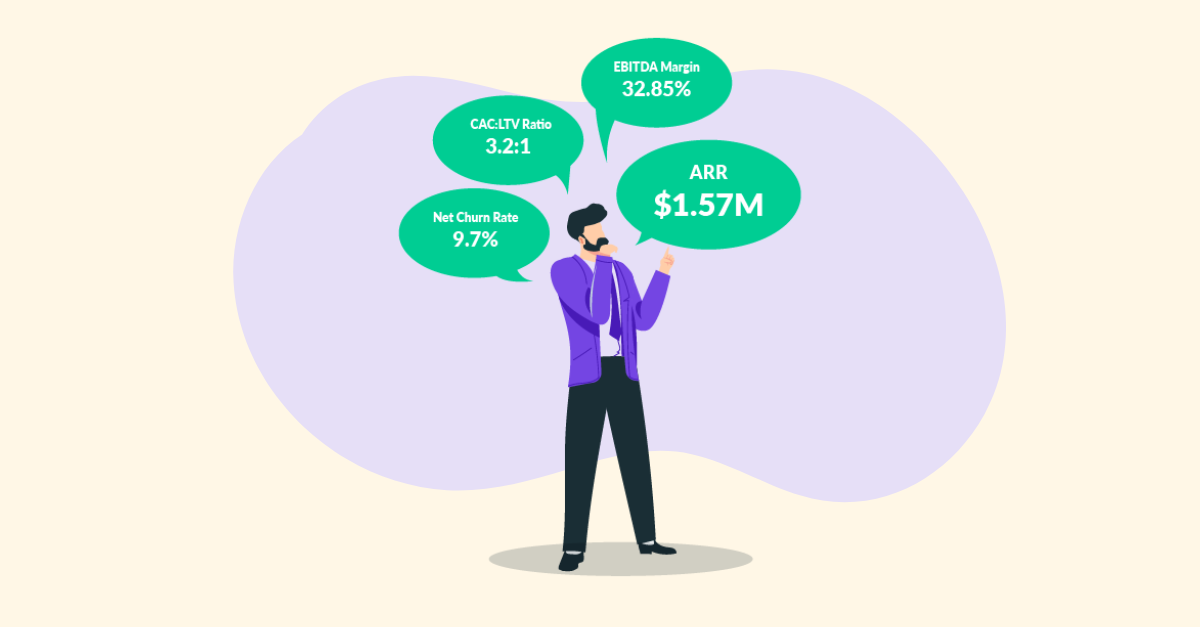Focus on these 5 series A metrics for fundraising success
Raising Series A funding is a critical and challenging stage for any startup. For many new companies, this is the first time in their financing...
4 min read
 Logan Burchett
October 13, 2021
Logan Burchett
October 13, 2021
In our last post, we shared that the number one reason startups fail is running out of money due to cash planning mistakes. Founders must prove a promising financial model to investors to successfully raise capital and grow the business.
Founders often acquire the initial financial model for the pitch, but fail to understand the value behind key metrics that speak volumes about cash trajectory and business growth. Particularly within Software-as-a-Service companies (SaaS), some metrics can make or break an investor relationship. Even more, failing to track this data can hide pivotal business opportunities as you invest in customer acquisition and retention.
Founders need to track and share these 10 economic, acquisition, and retention metrics to prove financial value to investors.
Total monthly subscribers * Average revenue per user
The SaaS model implies that customers will access the company’s service through a recurring subscription payment. Whether that payment is weekly, monthly, or annual, SaaS revenue tracks a little differently than that of a marketplace product or one-time purchase service. SaaS strategy relies on more than the initial sale closing because revenue growth largely depends on the retention of subscription customers.
For this reason, SaaS founders must closely track monthly recurring revenue or the amount of recurring revenue your company receives each month.
If your business only sells monthly subscription plans, you can simply track the total money received across all subscriptions each month to calculate MRR. If your business offers annual, quarterly, or biannual subscriptions, you must amortize the total amount of billed subscriptions to determine MRR.
MRR is not only important for investors to see, but also this metric will prove indispensable as you plan your cash runway based on monthly metrics.
MRR * 12
Annual recurring revenue is simply the annualized version of MRR, typically MRR multiplied by 12 months.
ARR is particularly important for B2B businesseses with subscription contracts that last one year or more. Because ARR engenders a more consistent and long-term understanding of overall business growth, this metric supports a SaaS company’s valuation and can prove YoY growth.
(Revenue – Cost of goods sold) ÷ Revenue
Gross margin is critical because it shows if your sales will exceed your business costs (CHRON). Gross margin is different from net profit because it does not include overhead costs. Instead, this metric relies on only the operating costs you incur that directly generate revenue. However, gross margin serves as an indicator of progress toward healthy net profit.
Not only does gross margin align with the sustainability of your cash runway, but this metric also helps founders understand the scalability of the business. If your revenue decreases by X amount of dollars, you can determine what fluctuation in cost to expect. Typically, SaaS founders should aim for an 80%-90% gross margin.
Total value of contracts ÷ total years in contract
On average, how much is the value of your contract? This metric proves particularly important for enterprise SaaS companies who offer custom contracts to customers because it translates to an average “price point.”
As with any company, SaaS companies need to have a sense of this average price point to strategize pricing decisions that will impact growth margin and overall business success.
However, founders cannot judge business success based on ACV alone. Some business models may have a relatively low ACV because subscription cost is cheap and/or customers have a short commitment contract (think Spotify, Netflix, and Amazon). These businesses need to generate a large number of customers to make huge revenue gains.
Conversely, a business with an extremely high ACV may charge each customer thousands or tens of thousands within a multi-year contract, but their total number of customers may exist in the double digits.
Depending on your business model, ACV can vary wildly. Founders must juxtapose ACV against customer acquisition cost and closely track variation on this metric to harness the impact on overall growth.
Average monthly price ÷ monthly churn rate %
How much money do you expect to earn from the average customer? LTV helps founders understand how much value each customer adds across the duration of your business relationship or contract.
To determine simple LTV, compare the average customer revenue against the predicted lifespan of that customer. As customer retention increases, the lifetime value of the customer also increases.
First, calculate the average monthly income per customer. Then, determine your monthly churn rate, which is essentially the average number of purchases in a year multiplied by average retention time in years. Divide the monthly income by churn rate percentage to calculate the lifetime value of a customer.
Founders should use this metric to track retention and compare against customer acquisition costs. Most notably, unexpected dips in LTV can reveal opportunities in your customer experience strategy.
Lifetime value of a customer (LTV) ÷ Customer acquisition cost (CAC)
Payback period is essentially the breakeven point for each customer. How long will it take for my company to recover costs from each customer acquisition on average?
For example, if my company pays $100 to acquire a customer that pays $10 each month, my payback period equals 10 months. demonstrates how long it takes the company to be paid back from paying to acquire your customers.
Total marketing costs ÷ total customer achieved
For example, if my company spends $1,000 on paid ads and gains ten customers total, my customer acquisition cost equals $100 (per customer).
If your company has multiple channels, determine CAC for each channel to glean a granular understanding of the acquisition performance of each. This metric provides a sense of unit economics, which allows founders to strategize marketing investment against revenue reward. In other words, if I invest $1,000 in a given channel, how much money will I get of out my investment?
(Lost Customers ÷ Total Customers at the Start of Time Period) x 100
Calculated monthly or annually, this metric that tells you the percentage of your customers or subscribers who cancel or don’t renew their subscriptions during a given time period (Hubspot).
In other words, how quickly is my company losing customer business?
This metric proves particularly important for SaaS model businesses because a high churn rate negatively impacts the lifetime value of a customer. If customers do not continue to renew their subscriptions to your product, you risk not earning back the customer acquisition cost.
Active users ÷ total subscribers
Founders must track actual active users on a monthly basis because this metric provides an early indication of churn. Low user activity means customers will soon cancel their subscriptions. Active users are less likely to churn.
As we know, an increasing churn rate directly decreases the lifetime value of a customer, which prevents companies from achieving profit. Pay attention to the early signs through MAU in order to pivot your strategy and increase customer engagement.
While there isn’t a standard formula for Expansion MRR, you should try to calculate the increase in monthly recurring revenue, specifically within your current users. For SaaS companies, expansion MRR usually consists of current users who upgrade to a higher-tier subscription plan. An increasing expansion MRR generally proves that your strategy is moving in the right direction – customers like your product so much that they want to invest in a longer commitment or gain additional features.
Get notified about new events, free resources, and fresh content

Raising Series A funding is a critical and challenging stage for any startup. For many new companies, this is the first time in their financing...

Revenue-based financing (RBF) is reshaping how businesses raise capital, offering a flexible alternative to traditional loans and venture capital. To...
.png)
Startup metrics should be every founder's true north. We call it KYN (know your numbers). Some founders do it, and some don't. As we've seen time and...